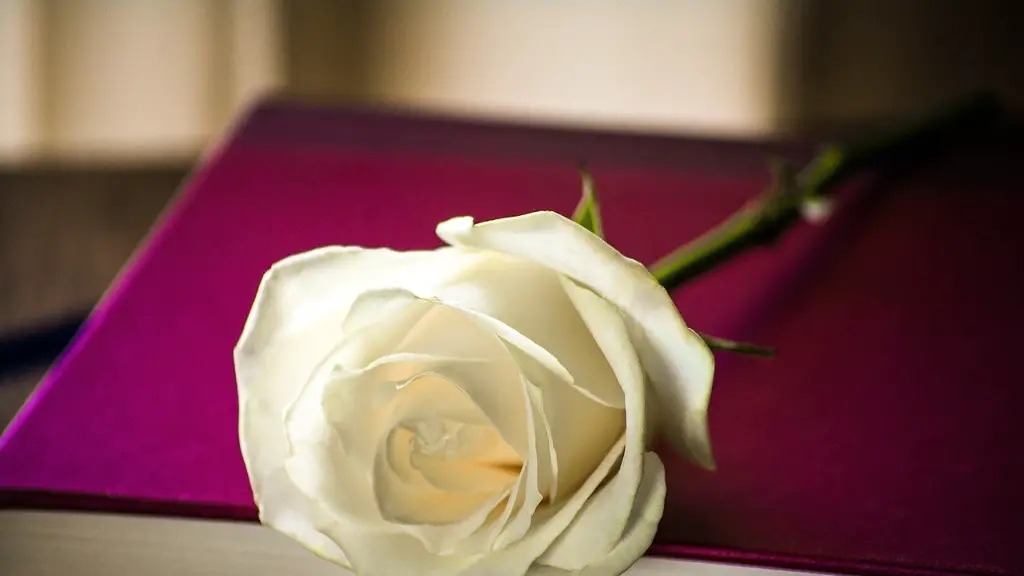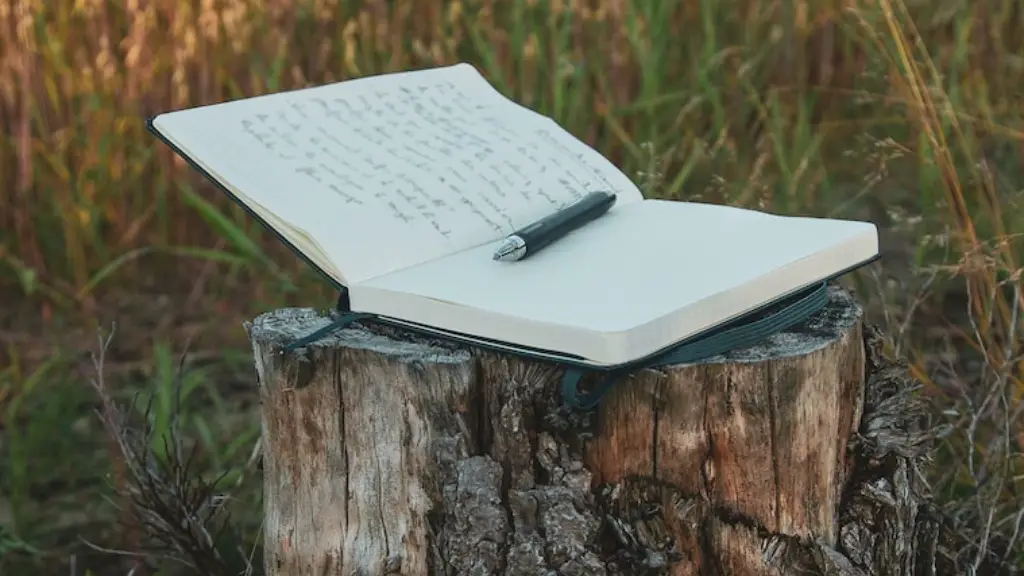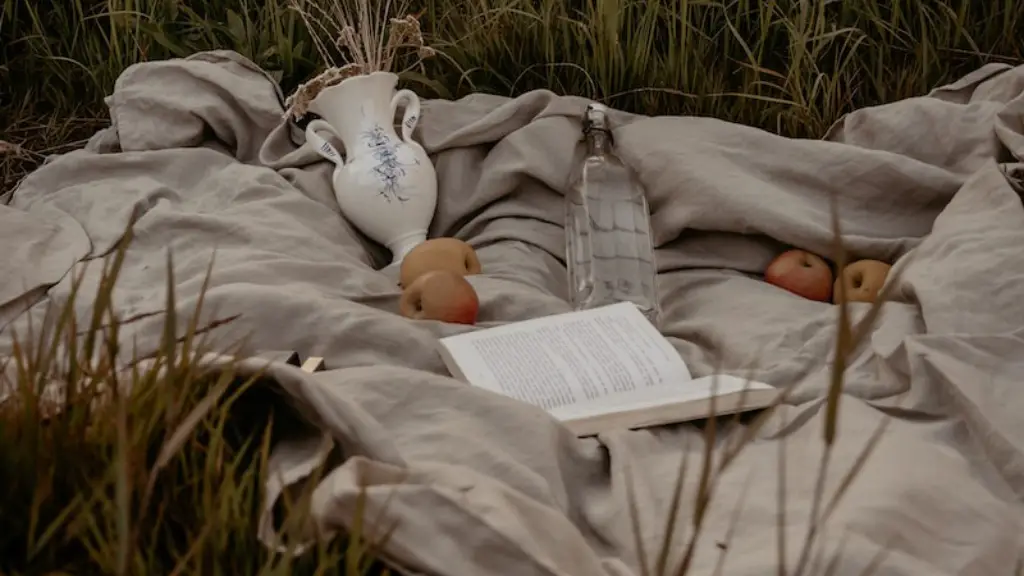Introduction
Writing a poetry analysis paper can be quite challenging for some people. It is important to discern the poem’s story, themes, and literary devices to gain a better understanding of the writer’s intent. Knowing what to focus on and the terminology to use can be daunting for some. To make the process easier, it’s important to break it down into smaller steps and focus on one task at a time. The following offers an introduction to help readers develop an analysis of a poem effectively.
Analysis
The first step in writing a poem analysis paper is to read the poem carefully. Pay attention to the sound, imagery, and form of the poem, as well as the mood it conveys. Note any literary devices used and how they contribute to the poem. Next, ask yourself what the overall message or purpose of the poem is. What is the poem saying? What is the tone of the poem? What feeling does it evoke?
After answering these questions, research any background information that may be relevant. Research historical context as well as any biographical information about the poet. Knowing certain facts about the poet or period during which the poem was written can help one gain or further understand the poem’s meaning. Look for key words, images, or symbols. Reading the poem more than once can be helpful, as one can spot something new after each reading.
The next important step is to identify the poem’s structure and form. What kind of poem is it? Is it a lyric, an elegy a sonnet, or an ode? Does the poem have a consistent meter or rhyme scheme? Knowing the form of the poem is important as it can help one to understand the poem better and determine what makes it unique in comparison to other poets.
The third step is to draw connections between the poem’s form, theme, and subject matter. Consider the ways in which the language, form, rhyme, or rhythm is used to convey the message or meaning of the poem. Ask yourself what effect, mood, or emotion the poem is attempting to create.
The final step is to write the analysis. Start by introducing the poem, author, and the theme to the readers. Include the thesis statement and the points that will be discussed in the body of the paper. The body of the paper should include a thorough analysis of the poem, discussing its form, structure, and themes, as well as how they are connected. Utilize experts’ opinions and citations to support the analysis when needed. Conclude the paper by reviewing and restating the main points.
Pros and Cons of Free Verse
Free verse is a form of poetry that is written without structure or rhyme scheme. While it provides poets the freedom to express themselves without any rules and limitations, there are both pros and cons to this form of poetry.
On the one hand, free verse encourages poets to explore the boundaries of traditional poetry and to be more creative. The poet is liberated from having to adhere to traditional structures or conventions, and is free to “say what he or she pleases” without having to worry about rhyme or meter. There are also advantages to the reader, as free verse does not require them to adhere to traditional forms, making it easier for them to pick up on subtle nuances in the poem.
On the other hand, free verse runs the risk of becoming overly wordy and unstructured. Without traditional constraints, poets tend to rely on the strength of their words rather than the form. Furthermore, when writing too much free verse can cause a poem to lose its focus, and makes it more difficult for a reader to follow the poet’s train of thought.
Expressing Emotions Through Poetry
In poetry, emotive language is often used to evoke a certain feeling or emotion. Writers may also make use of descriptive language, such as metaphors and similes, to draw comparisons and to create vivid images in their readers’ minds. There are several ways in which poets can express emotions through their writing, such as using specific language or playing with sentence structure.
One way that writers can express emotions is by using figurative language. Figurative language is the use of words or phrases to convey a certain emotion. Writers may use metaphors and similes to draw comparisons and to evoke certain feelings in the reader. For example, a poet may compare a person’s sadness to a “weight on their chest,” or an individual’s joy to “dancing in the sunlight.”
Writers may also use specific words and phrases to evoke certain emotions in their reader. For example, a poet may use the word “despair” to connote sadness, or “delight” to express joy. Similarly, writers may also manipulate the structure of their sentences to create an emotional effect. For example, a poet may use short staccato sentences to create a sense of urgency and suspense, or long sentences to express a dreamy, meditative mood.
Tools and Techniques
As with any form of writing, there are certain tools and techniques poets can use to express themselves and their emotions. To help poets better explore their creative side, it’s important to familiarize oneself with these tools and techniques.
A commonly used tool for poets to explore different emotions is imagery. Imagery is the use of descriptive language to evoke certain feelings or emotions in the reader. Poets can use similes and metaphors to draw comparisons and create vivid images in the readers’ minds. They can also use personification, which is the act of assigning human qualities to inanimate objects.
Writers can also utilize figurative language, such as hyperboles and irony. Hyperbole is an exaggeration or overstatement used to emphasize a point, while irony is the use of words to convey an idea that is the opposite of its literal meaning.
Poets may also choose to explore their emotions through the use of sound. Alliteration, assonance, and consonance are examples of sound devices used to create patterns and to draw attention to certain words. Furthermore, to add more of a musical quality to their poetry, writers may also incorporate rhythm. Rhythm is the use of stressed and unstressed syllables to create a musical effect.
Ending the Poem
The conclusion of a poem is the final section of the poem and is often used to close the argument or emotion of the poem. The ending can be a powerful way to leave the reader with a lasting impression and provide a sense of closure.
The content of the conclusion should be both deliberate and meaningful. Writers may make use of irony, rhetoric questions, or repetition to create more impact in their conclusions.
In order to make the ending more powerful, poets may choose to include a refrains, which is a repeating phrase at the end of a poem. A refrain may be used to create a sense of closure, or to emphasize a point or emotion.
Writers may also make use of religious, mythological, or historical allusions to provide insight or draw parallels between the poem and another entity. Allusions can be used to provide a bigger, more universal perspective on the poem’s main message or theme.
Lastly, writers may choose to include symbols in their conclusion to add more meaning or to convey a certain emotion. Symbols are powerful because the meaning of each symbol differs depending on the reader and the context in which it is used.
Writing Style
Writing style is an important element of poetry. The way in which a poem is written can give readers a better understanding of the poet’s intent. Some poets choose to write in a more traditional form, while others choose to explore what they can do with language and form.
For example, some poets may opt for traditional forms such as Romanticism or Modernism. Romanticism is a style that emphasizes emotion, imagination, and creativity. Modernism is a style that makes use of techniques and experiments with form to create more meaningful, complex works.
Other poets may choose to explore new methods, such as free verse or a stream of consciousness. Free verse is an open form of poetry that does not follow a particular structure or rhyme scheme. Stream of consciousness is a technique that gives the reader an insight into a character’s thoughts and emotions.
No matter which writing style one chooses to use, it’s important to remember that the most important factor is the clarity of the message conveyed. Writers should strive to ensure that the meaning of the poem is clear, even if the language or structure used is unconventional
Getting Feedback
Getting feedback from both experts and non-experts on a poem is critical to writing a successful poem analysis paper. Being able to receive critical feedback on a poem can help the writer to refine their work and identify weaknesses or areas to improve upon.
For poets, it can be helpful to share their work with peers and mentors, who can provide information and advice on the poem. Constructive feedback can help the poet to understand what works and what doesn’t.
It’s also important to remember that feedback and criticism should be taken with a grain of salt. Not all criticism is valid, it’s important to filter out criticism that one does not agree with and focus on advice from experts.
Finally, it is important to keep in mind that no one is perfect. Everyone makes mistakes and it’s important to learn from them. Mistakes are opportunities for growth, and can help poets to improve their work and develop into better writers.


